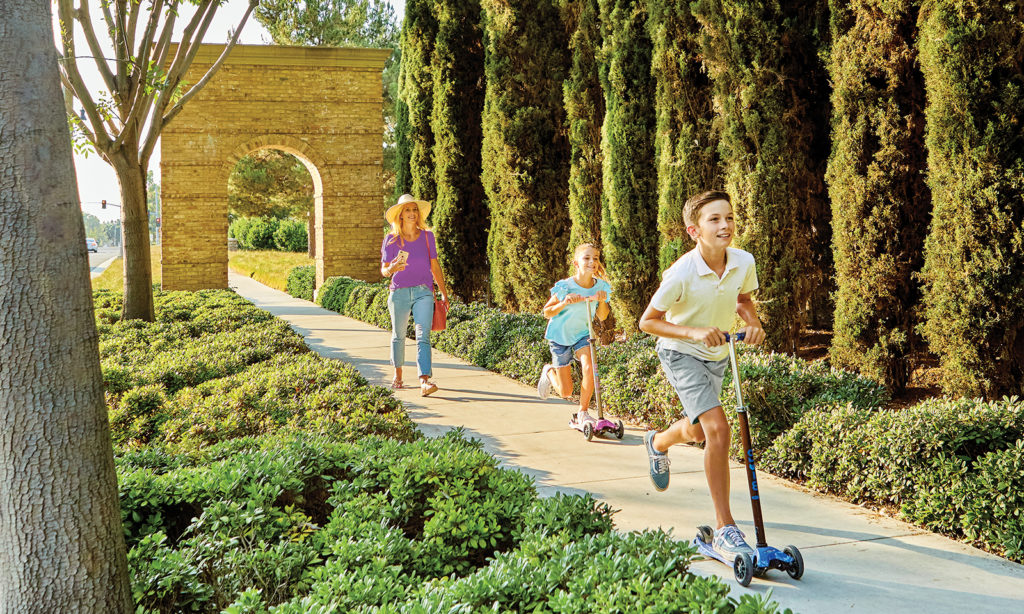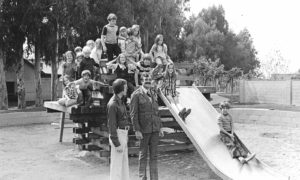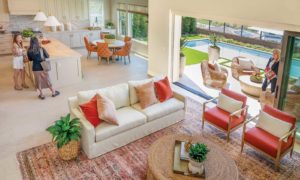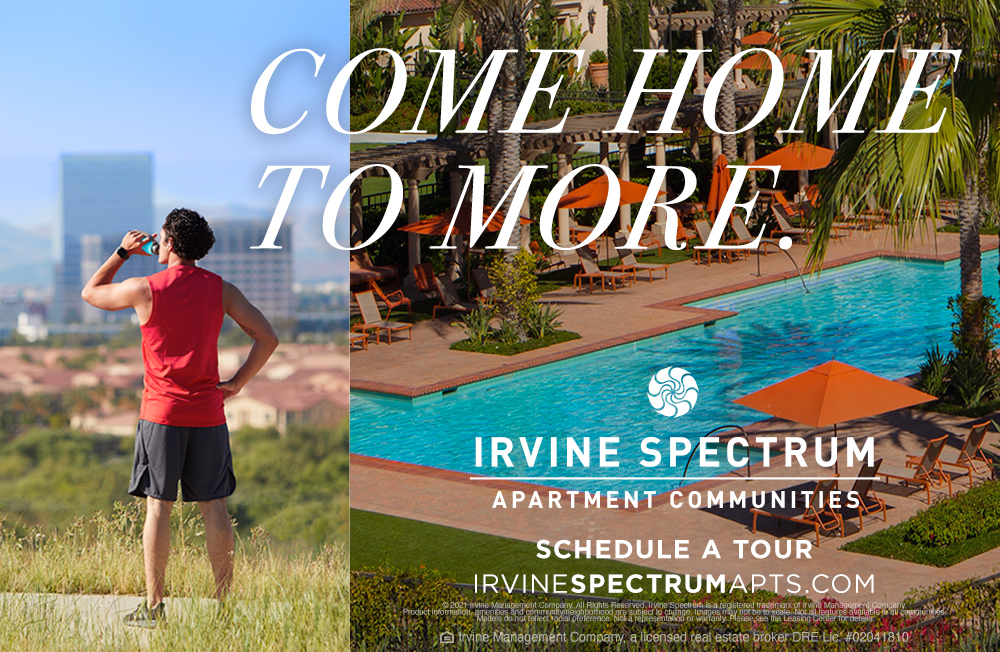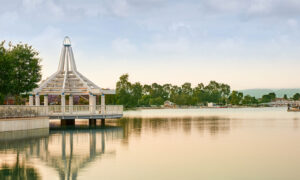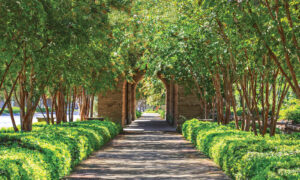ASK IRVINE RESIDENTS where they live, and you’ll likely hear “Turtle Rock” or “Oak Creek” or perhaps “Portola Springs.”
That’s a testament to the Master Plan’s vision to create a city of villages.
Each of Irvine’s 24 villages – from the first, University Park, to the latest, Orchard Hills – has its own unique identity, and all are valued for a simple reason: They make life easier.
“It’s so incredible,” says Alan Hess, a University Park resident and author of 20 books on architecture and planning. “Everything is close. I can walk to the market, the library, the school, the parks and shops. It’s just good design that creates connections with my community.”
Hess leads walking tours with residents, planners and historians from all over the world to showcase the benefits of Irvine’s village design.
Village lifestyle ‘unprecedented’
A recent scientific public opinion survey found nearly 90% of residents rate their quality of life as “excellent” or “good,” versus just 1% who are unsatisfied. The national research firm that conducted the survey, FM3 Research, said the positive numbers are “unprecedented in their decades of polling in cities across America.”
The village design also has led to consistently strong property values. According to market intelligence firm Metrostudy, Irvine homes appreciate faster during good times and depreciate slower during the challenging times. Since 2010, Irvine’s new-home values have increased nearly 40% more than the average Orange County new home.
“We chose Irvine and Orchard Hills because of the beautiful trees and rolling hills,” says new Irvine resident Minghua Liu. “We see our new home as a wonderful long-term investment.”
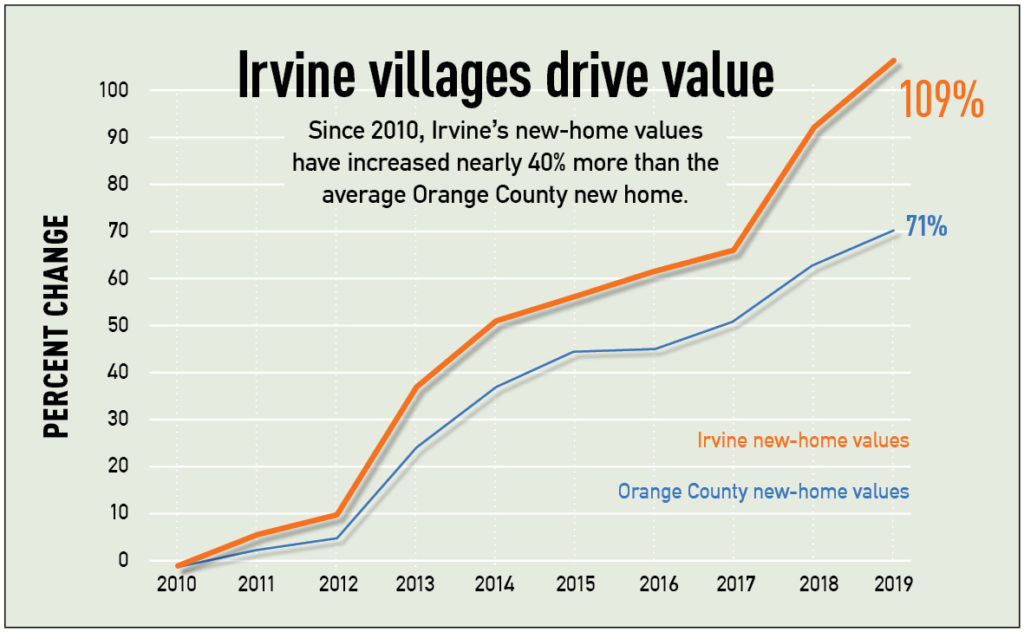
Villages defined by the land
Irvine villages are defined by both natural and man-made features to provide individuality, uniqueness and a sense of place. It is why Eastwood is defined by towering eucalyptus windrows, some planted 120 years ago, and why Orchard Hills overlooks thousands of lush green avocado trees. At Woodbridge, two iconic lakes are the stars.

